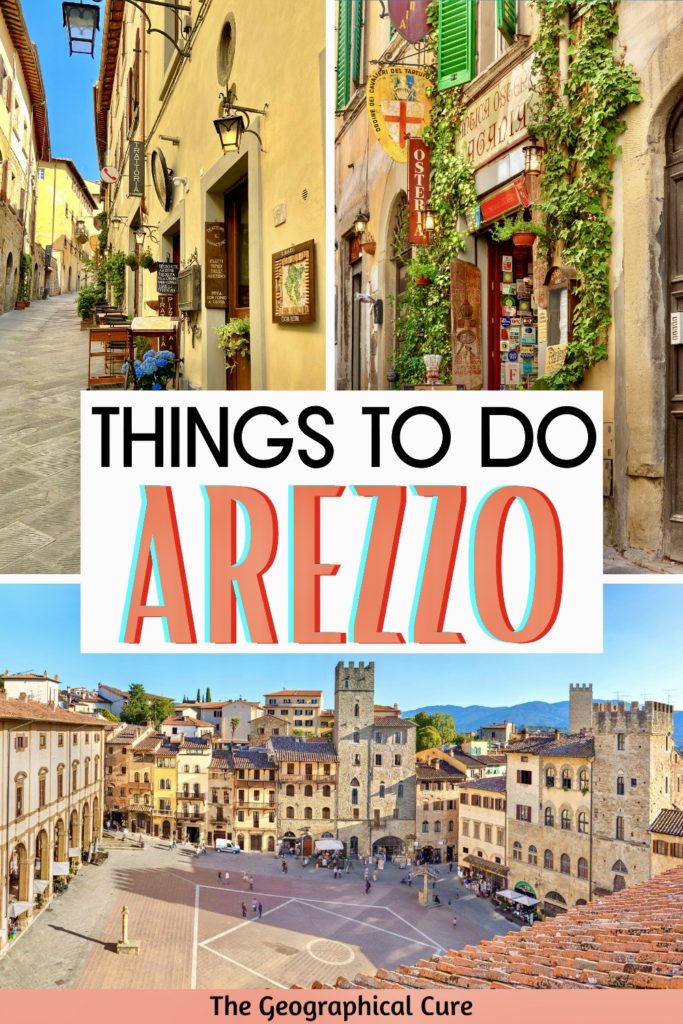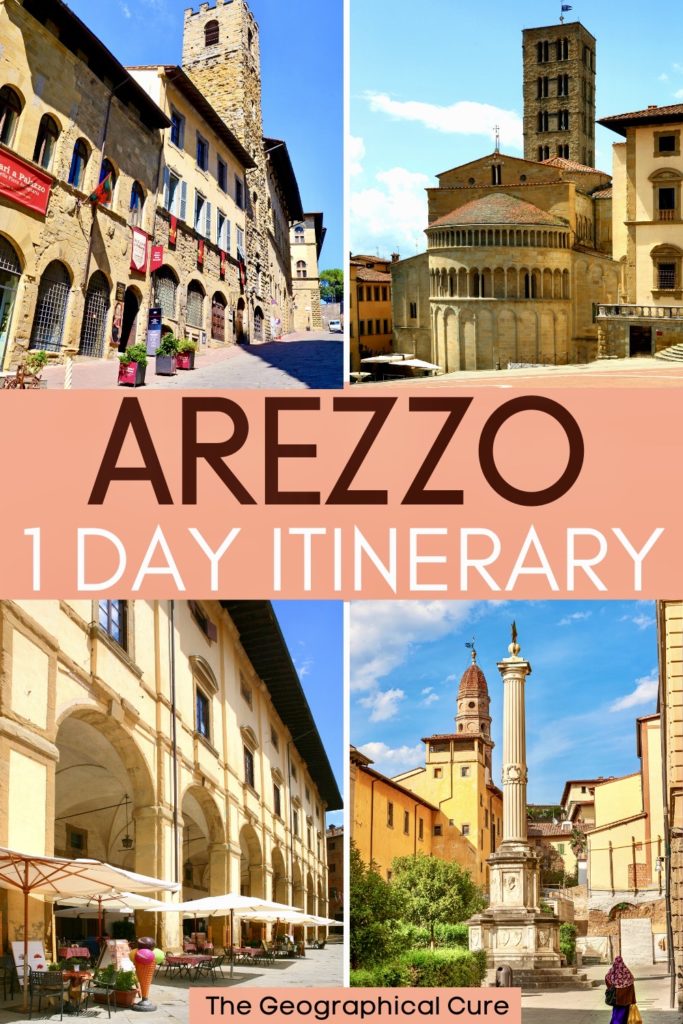Looking to explore Tuscany beyond the usual tourist spots? Why not venture off the beaten path and discover the charming medieval town of Arezzo with this perfect one day itinerary.
Arezzo is a bustling town that seamlessly blends its medieval heritage with modernity.
The compact town center is mostly car-free, making it perfect for leisurely strolls. There’s plenty to keep you entertained, from exploring historic landmarks to indulging in delicious local cuisine.
Before starting a recent Tuscany bike tour, I had the opportunity to visit Arezzo for a day. As it’s not a typical tourist hotspot, I wasn’t sure what to expect.
However, I was pleasantly surprised by the town’s vibrant atmosphere. It’s a mini-tsunami of high culture, architecture, and history all set amid a cobbled old town.
Short History of Arezzo
Arezzo is an ancient city. Before Rome was founded, it was one of 12 cities that formed the Etruscan League.
The Etruscans named the town Aritim, which the Romans later transformed into Arretium. The symbol of Etruscan Arezzo was the Chimera, a hybrid creature from Greek mythology.
In the 3rd century B.C., Arezzo was captured by the Romans. Arezzo was on an important trade route, the Via Cassia, so its fate was inevitable.
Like most Roman towns, Arezzo once had a Roman amphitheater, forum, and arena. You can still see the ruins of the amphitheater today.
In the Roman period, Arezzo became renowned for its ceramics. The town began to export ceramics, which became its main source of wealth.
When Rome fell, the Lombards conquered Arezzo. They laid the foundations of medieval Arezzo.
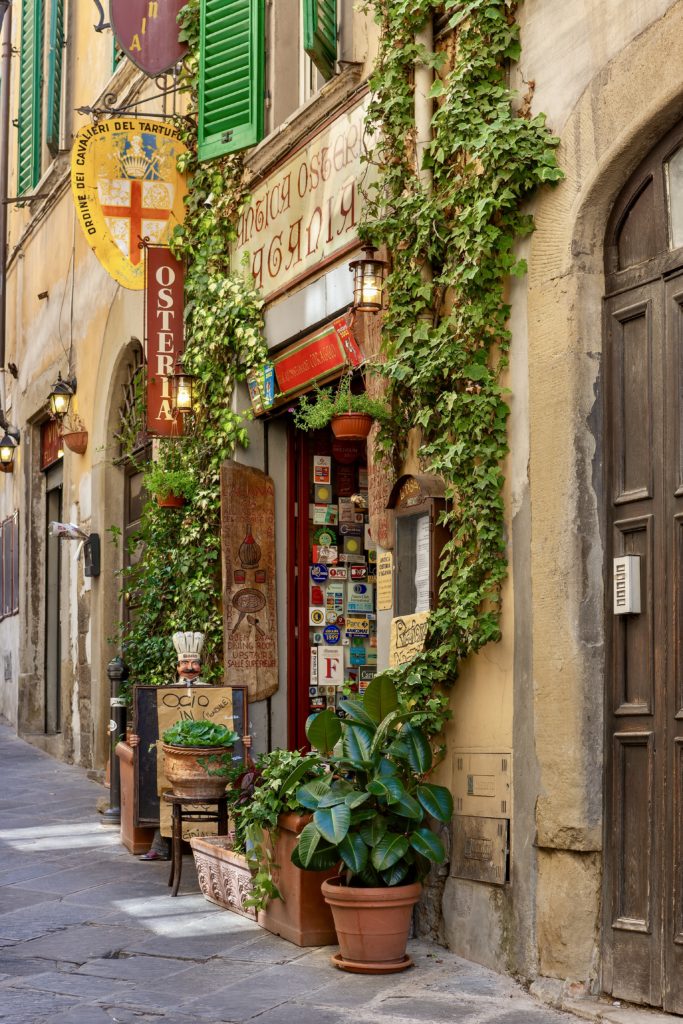
In the Middle Ages, Arezzo (like everyone else) did battle with Florence. In 1289, the Ghibellines of Arezzo (the imperial party) were heavily defeated by the Florentine Guelphs (the papal party).
Being “owned” by Florence meant a loss of economic and political independence. Arezzo was isolated during the Renaissance until Cosimo I de’ Medici became interested in the town.
He helped “Renaissance” the city, bringing in Florentine artists to fresco the churches. He also built the Medici Fortress for defensive purposes.
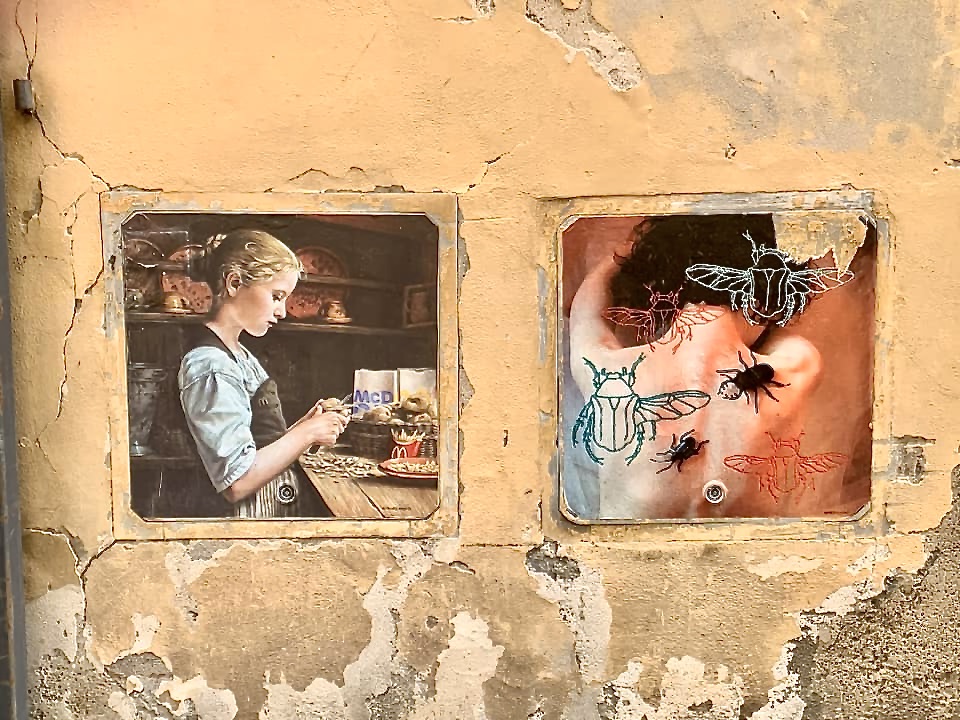
Here’s a snapshot glance of what you can see in Arezzo:
- Basilica of San Francesco
- Arezzo Cathedral
- Casa Vasari
- Clock Tower
- Piazza Grande
- Santa Maria La Pieve
- Ivan Buschi Museum
- Roman Anphitheater
- Archaeological Museum
- Medici Fortress
- Arezzo Chimera
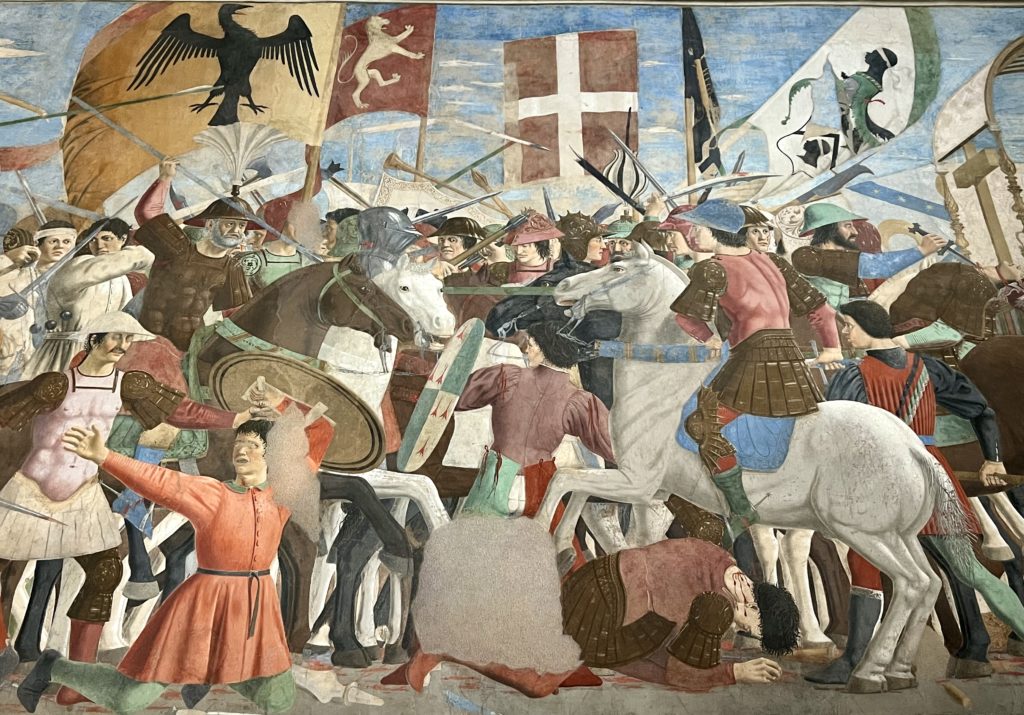
Arezzo In One Day
1. Basilica of San Francesco
The top attraction in Arezzo is the Basilica of San Francesco, or St. Francis. It’s has a rough brick facade paired with an airy barn-like interior. The church houses Arezzo’s top attraction, Piero della Francesca’s Legend of the True Cross fresco cycle.
It’s hugely important, considered one of the great and most influential frescos of the early 15th century.
Piero used a then still innovative single point perspective. He populated the frescos with serene figures with his trademark perfectly oval heads.
Piero was a subtle artist who used a harmonious combination of color, light, and exactitude of line. His work is elegant and extremely refined.
The Legend of the True Cross cycle was based on a 13th century book of the same name by Jacobus de Voragine.
The fresco tells the story of the cross on which Christ was crucified. Amidst many narrative twists, the cross is lost, rediscovered, buried, stolen, and recovered in battle. The idea is that the cross remained the same throughout history.
You see scenes from the death of Adam, the meeting of Soloman and Sheba, and Constantine’s Dream.
There are two great battle scenes. Knights ride exquisite dancing horses amid a forest of lances.
One scene depicts Constantine’s battle for power against rival emperor Maxentius. The other shows Heraclius’ trump over Chosroes, who stole the cross.
Piero’s images are so potent and pure that they ravish hearts. Giorgio Vasari claimed that the frescos were “so well-executed that but for the gift of speech they seemed alive.”
One of the most beautiful images is of Constantine’s Dream, with its interplay of light and darkness.
Constantine sleeps in his tent dreaming he will win the coming battle under the sign of the cross. When his dream came true, the emperor converted to Christianity.
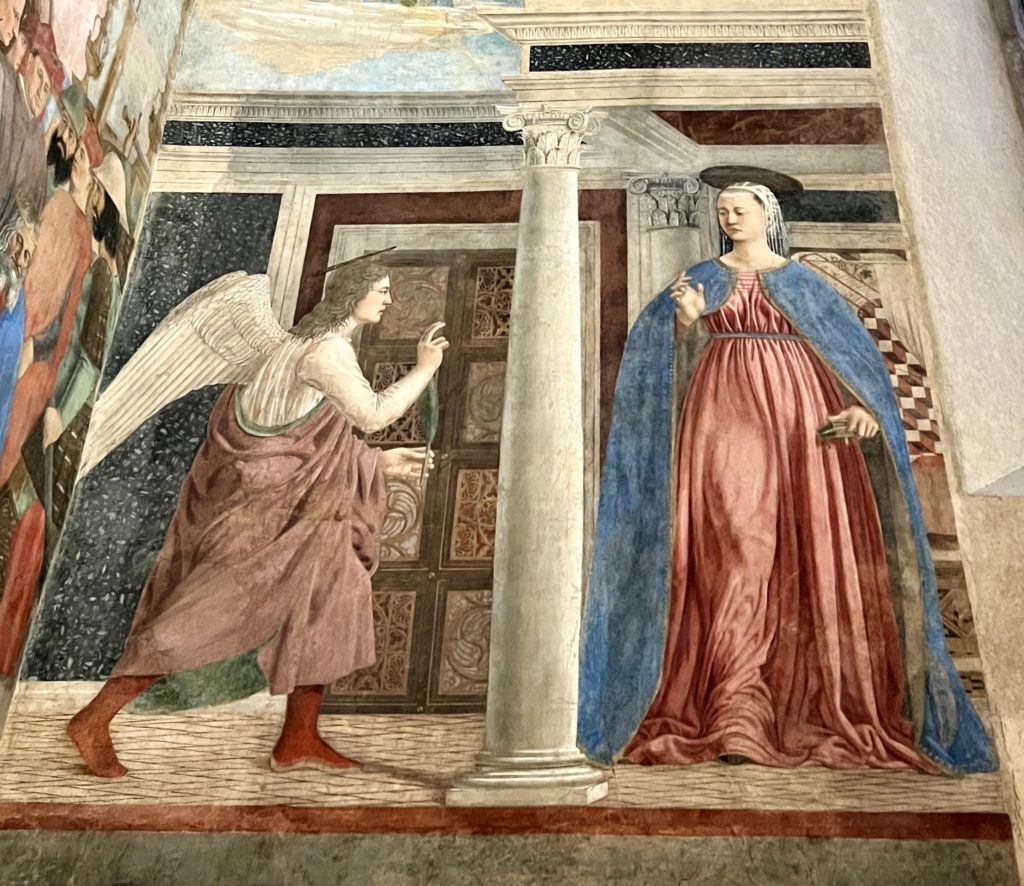
Unfortunately, the frescos are damaged. It’s a wonder that, like other Piero works, they didn’t completely vanish.
The basilica was repeatedly hit with earthquake, floods, and a perpetually leaking roof. Candles and fires left greasy stains on the frescos.
In the 18th century, Napoleon’s troops stayed in the church and gouged the frescos with swords.
There were attempts at restoration that failed. In the early 1990s, the frescos were properly restored and you can now see their vivid colors.
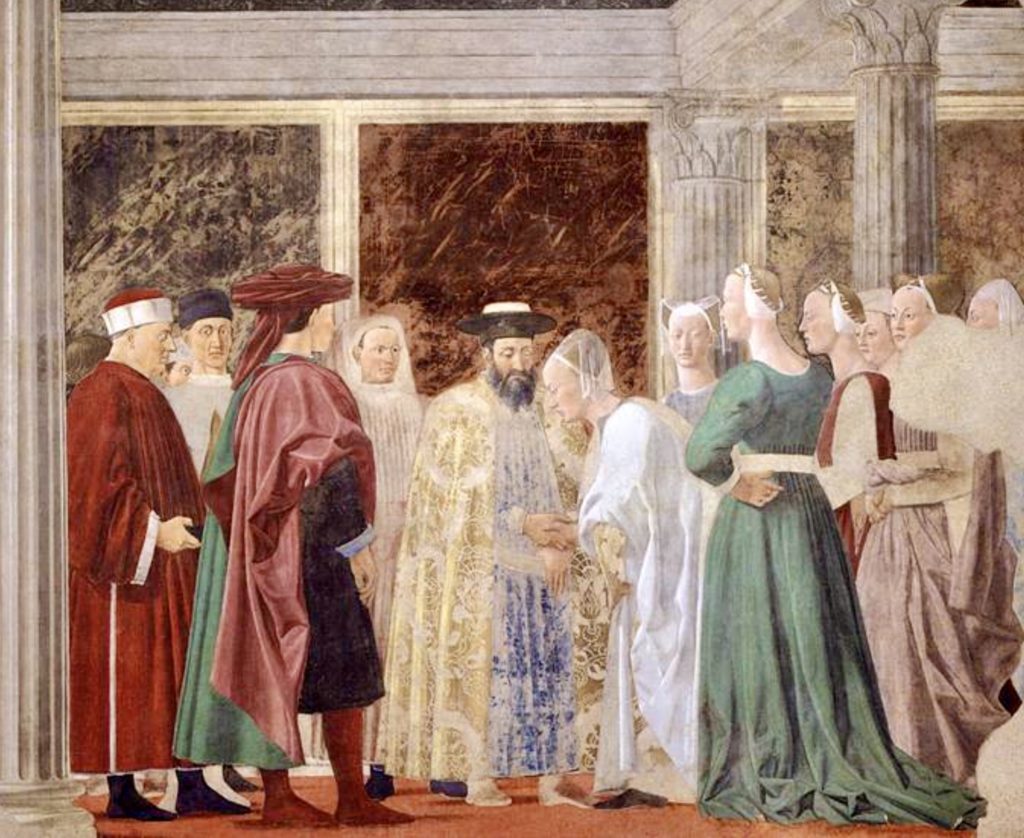
The frescos are also well lit. There’s no need to throw a euro in a box to light them up.
To enter the basilica and see the frescos, you need to pre-book a time slot reservation Only 25 people are allowed in at one time.
You can’t make a reservation online. You can do this in the ticket office, which is just around the corner to the left of the church facade. I was able to pop in and get a reservation in two hours time.
There’s sometimes a guided tour at night, at least on Saturdays, for one euro.
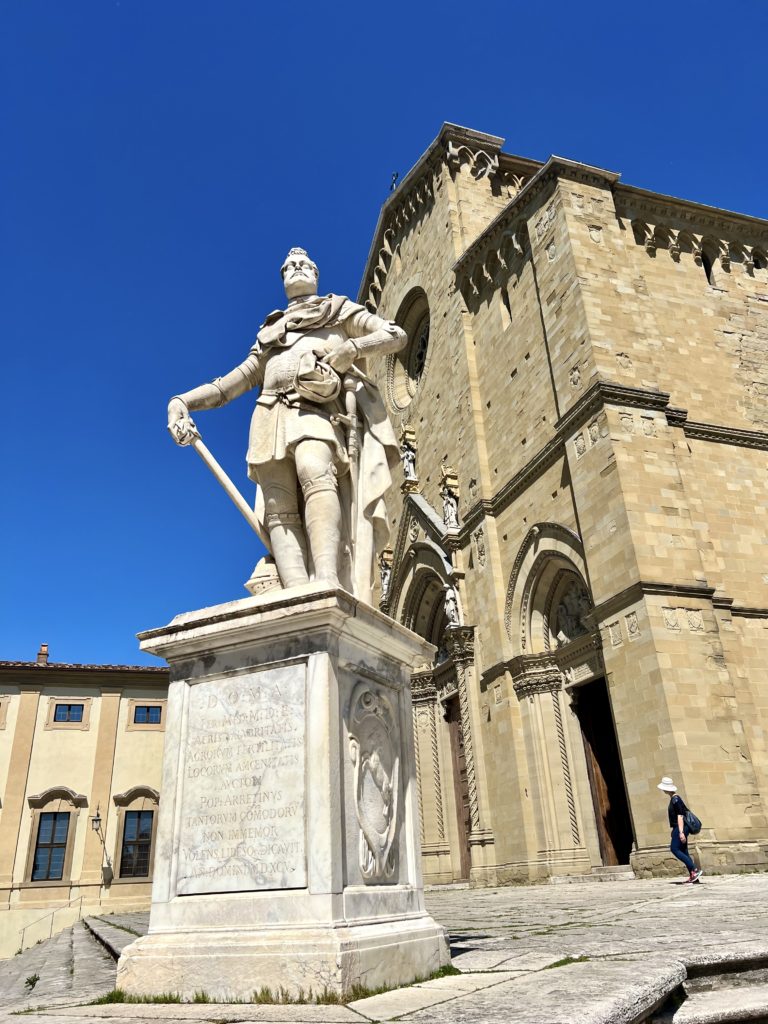
2. Arezzo Cathedral
The Cathedral of San Donato has a rather austere exterior. It’s an early Gothic church, dating from the 13th century. It took over two centuries to build. The pointy bell tower, added in the 19th century, is the symbol of the city.
Like most duomos in Italy, the cathedral holds religious art and funerary tombs. The 14th-century tomb of Pope Gregory X is in the right aisle.
You’ll find a luminous Mary Magdalene portrait by Piero della Francesca, a Baptism of Christ painted by Vasari, and some beautiful terra cotta ceramics by della Robbia.
Piero’s madonna is hidden in a corner. Unliked the basilica frescos, it’s in excellent condition.
There are also some striking 16th century stained glass windows with dazzling compositions and colors. They were created by French artist Guillaume de Marcillat.
Click here to book a cathedral ticket.
3. Casa Vasari
Art lovers should visit the House of Giorgio Vasari, the famed Florentine architect and artist. Vasari was born in Arezzo and was a local hero. You’ll see his name everywhere.
If you’ve seen his fresco cycles in Florence in the Duomo and Palazzo Vecchio, this is a unique opportunity to see his very own home.
Vasari painted frescos in six rooms between 1542-68. The sumptuous frescos depict biblical scenes, mythological scenes, and sacred and profane allegories.
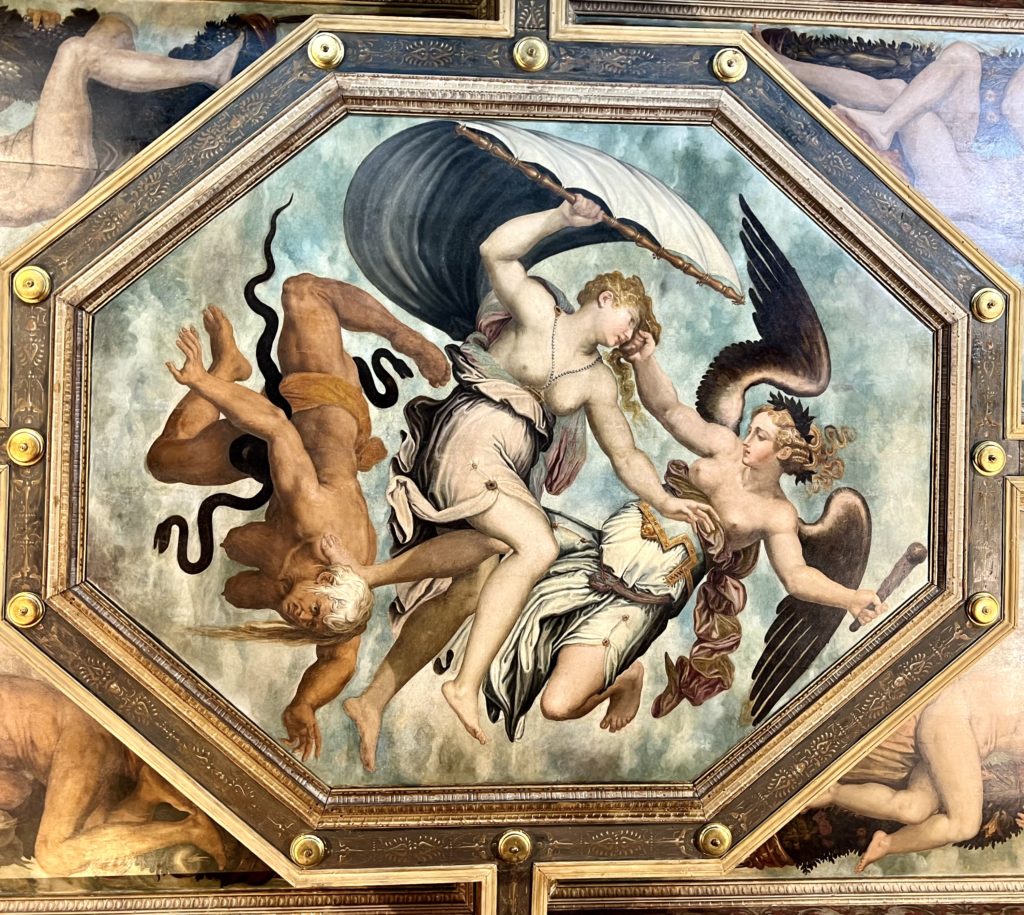
Vasari’s home is the best preserved artist’s house from the era and a triumph of the late Renaissance style of Mannerism.
I loved it, as I always love visiting an artist’s house museum. It was unexpectedly charming. There’s a 10 minute video you can watch for background information.
You’ll also find several Vasari paintings and his correspondence with Michelangelo and Cosimo I de Medici.
Here’s my complete guide to Casa Vasari, with must know tips for visiting. You have to make a time slot reservation to visit and can only stay for one hour. But that’s plenty of time to see everything.
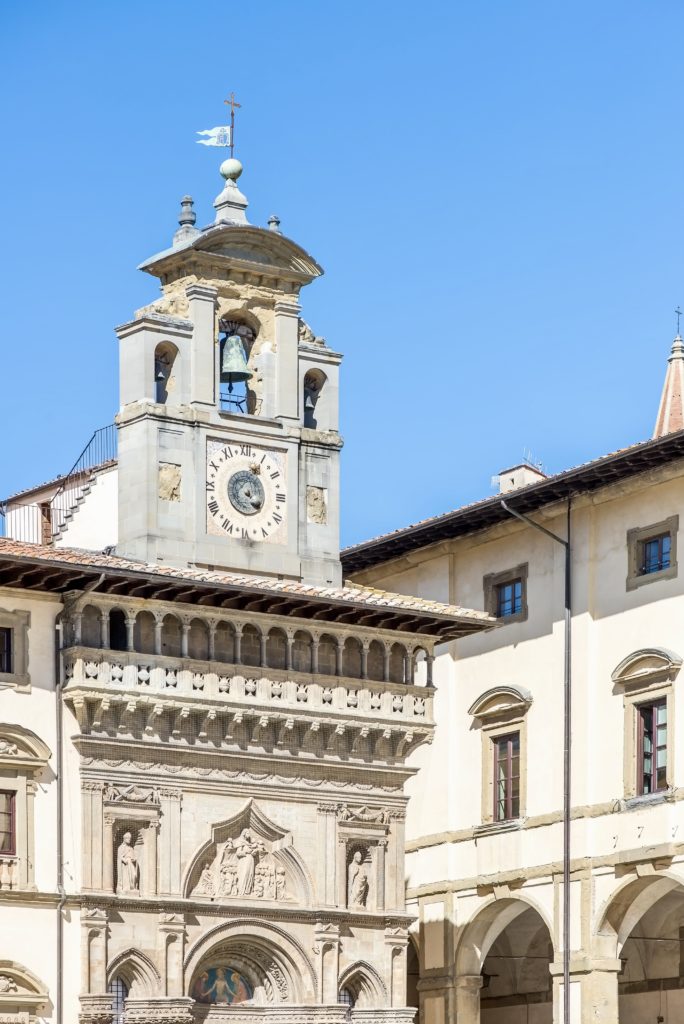
4. Climb The Clock Tower At Palazzo della Fraternita dei Laici
Arezzo’s clock tower at Palazzo della Fraternita dei Laici is located a corner of the Piazza Grande. The palace mixes Gothic and Renaissance architecture.
The Aristotelian-Ptolemaic Clock was built and installed in 1552. It’s still working after five centuries.
You can climb the clock tower for some amazing views. There’s a small terrace at the top. Unfortunately, there’s no lift. But it’s only 57 stairs to the top.
From the rooftop, you can see most of Arezzo and into the Tuscan hills.
The palazzo also houses Arezzo’s Civic Museum. You’re greeted by a sculpture of Pallas Athena. The museum holds some minor works and the private collection of the Bartolini family, consisting of paintings, sculptures, and drawings.
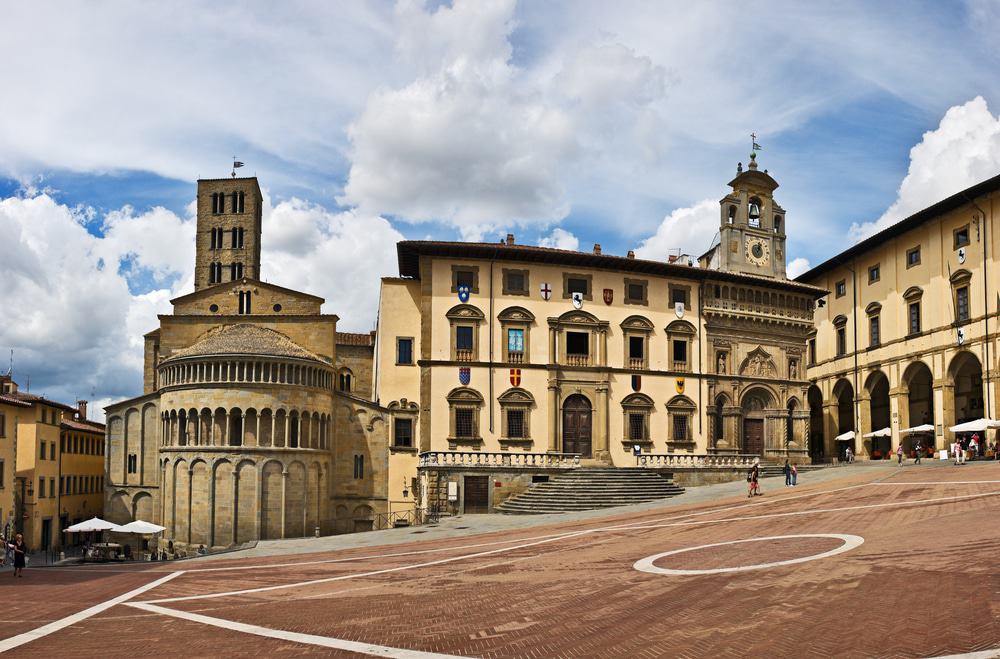
5. Piazza Grande
Piazza Grande is Arezzo’s massive sloping main square. It reminded me of the Piazza del Campo in Siena. It’s definitely one of Europe’s most eye catching piazzas studded with amazing old word architecture.
On the north side is a beautiful loggia designed by Vasari. It’s an open gallery enclosed by a line of arches. It’s reminiscent of the Uffizi Gallery in Florence, a building that Vasari also designed.
This is also where you’ll find the Palazzo della Fraternita dei Laici, which I mentioned above. You can see the apse of La Pieve. And you can also admire the Palazzo del Tribunale, which is a Baroque building from the 18th century.
The Piazza Grande is the perfect place to sit down, sip a glass of wine at Cafe Vasari, and people watch.
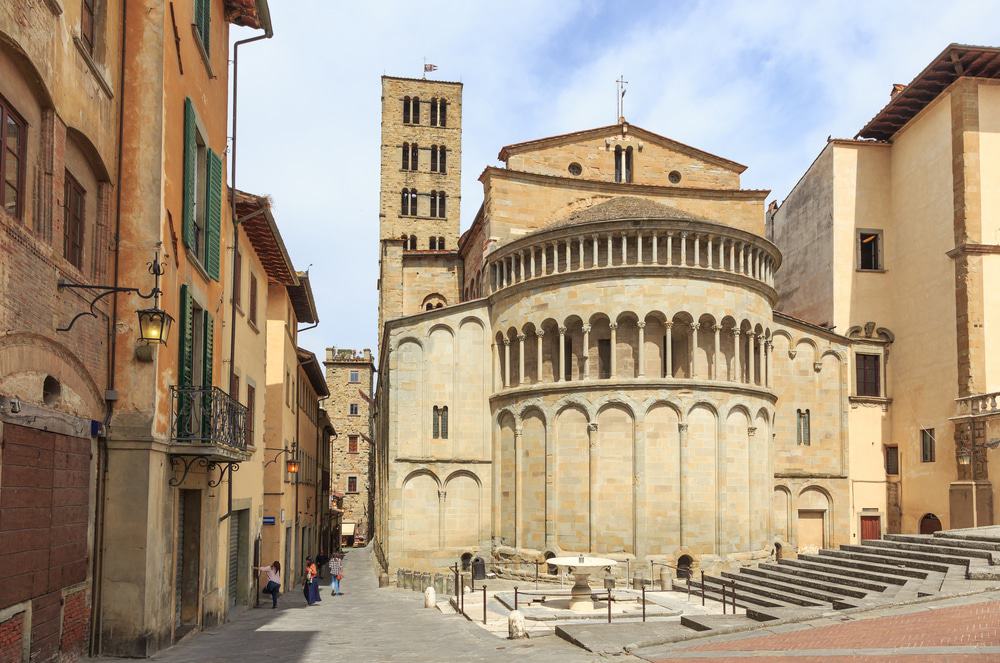
6. Santa Maria La Pieve
La Pieve is a beautiful Romanesque church that dates from the 11th century. The church is built in the Pisan style of architecture and is Arezzo’s most important sacred building.
There are three levels of arcades built on top of each other. There are blind arches on the bottom and loggias on the top two floors.
The arches and columns grow smaller and more numerous with each rising story — 12, 24, and 32. The third level is beautifully lit up at night.
La Pieve also has a fine bell tower. At 10 stories, it’s the tallest building in Arezzo.
The interior of the church is a study in harmony. The high altar was designed by Vasari. It has a beautiful polyptych by Pietro Lorenzetti depicting a madonna, child, and saints.
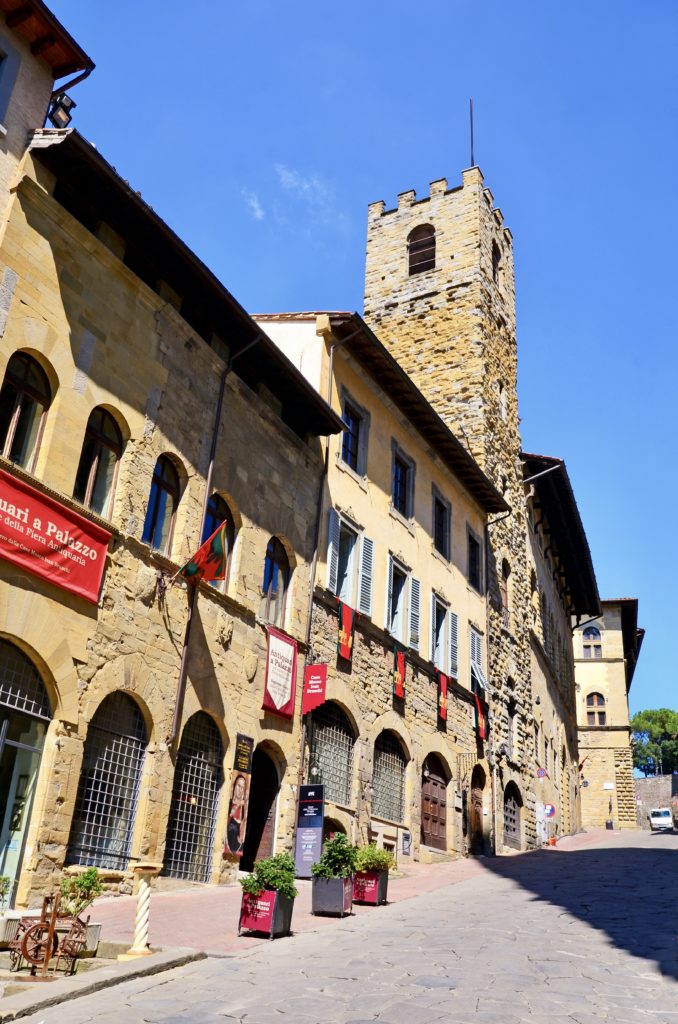
7. Ivan Bruschi Museum
This museum is a house museum that was the home of Ivan Bruschi, the inventor of the antique fair. Arezzo still holds an antique fair on the first Sunday of the month in Piazza Grande.
The museum holds a precious and eclectic collection of antiques. There are over 10,00 pieces from all over the world, including Etruscan, Greek, and Roman artifacts.Yyou’ll find sculpture, coins, furniture, books, and jewels.
The museum is located in front of La Pieve. The collection is displayed over three floors. The museums also holds special exhibitions and educational workshops.
At the top, there’s a terrace with a fine view.
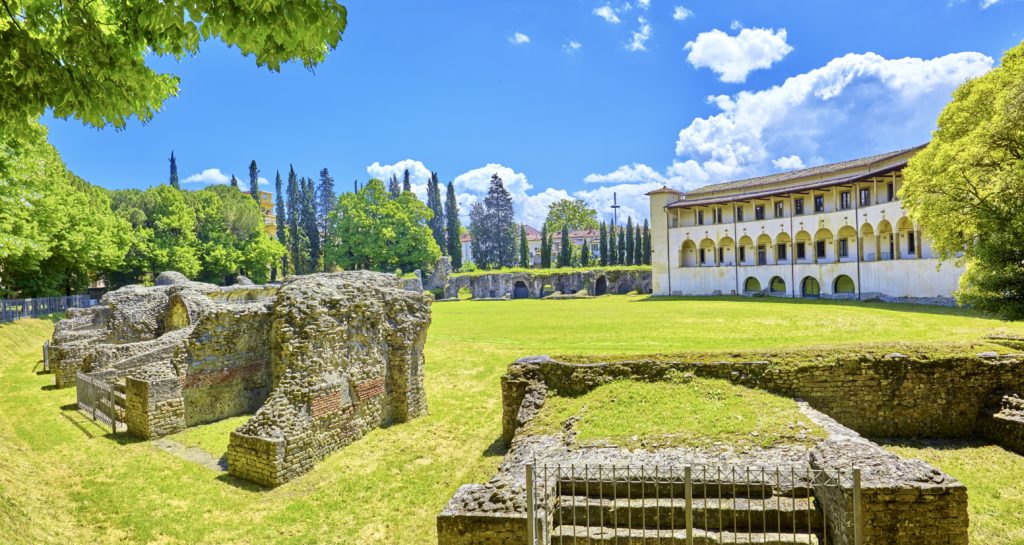
8. Roman Amphitheater
The Roman Amphitheater of Arezzo was built in the 2nd half of the 2nd century, when Hadrian was emperor. By the 15th century, it was looted and became a ruin.
Excavated in 1915, the amphitheater was restored several times after World War II. Only part of the grandstand and the aisles can still be seen.
9. Arezzo Archaeological Museum
The Arezzo Archaeological Museum, which you can see on the right of the photo above, is right next to the Roman ruins. It sits on the site of a former Roman arena, where gladiators used to perform.
It’s a beautiful curving building that was a former convent. It has a loggia and windows that look out on a garden.
The museum is a little gem and one of the best things to do in Arezzo. It houses a large collection of Etruscan and Roman artifacts. Some date as far back as the 8th century B.C.
There’s a fine collection of red pottery vases with delicate reliefs. They are called coralline or Aretine ceramics. Arezzo was renowned for these ceramics in its Roman period.
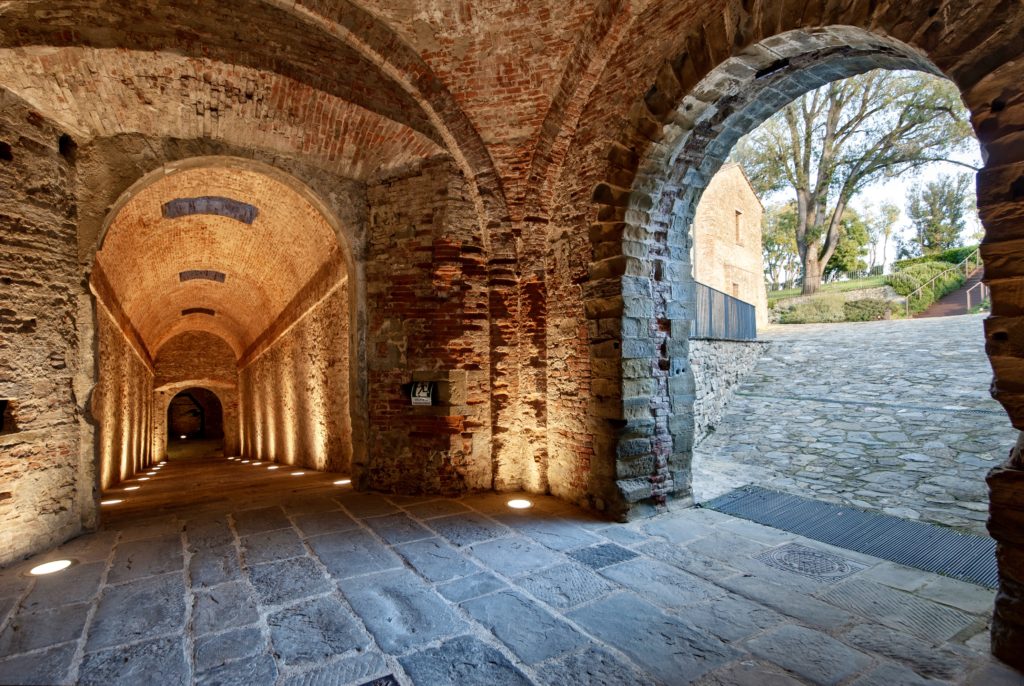
10. Medici Fortress
The Fortezza Medicea is a fine example of military architecture from the 16th century.
The fortress has a pentagonal shape and 5 defensive towers. You can walk in the grounds of the fort and climb up to the top of the battlements.
From them, you’ll stunning 360 degree views of Arezzo and the surrounding countryside.
There are informative plaques in English, which detail the history of the structure. You should do the Medici Fortress at the same times as the cathedral because of their proximity.
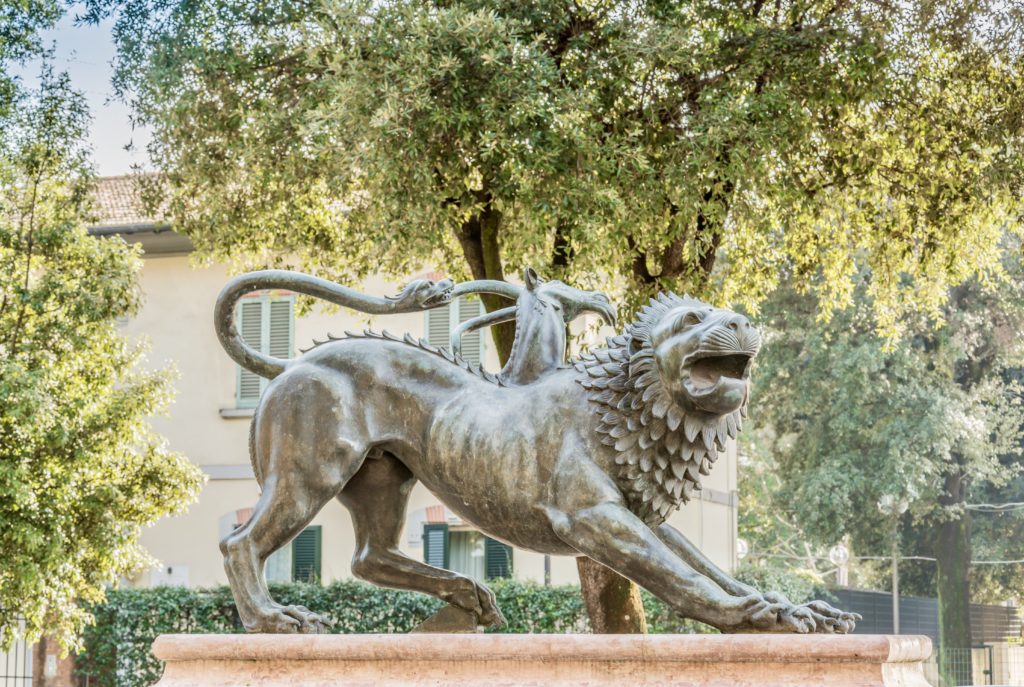
11. Arezzo Chimera
You should also see the famous Arezzo Chimera. The 4 feet original dating from 400 B.C. is the Florence’s Archaeological Museum. It’s considered the supreme masterpiece of Etruscan bronze casting.
The chimera was discovered in 1553 near Arezzo. Cosimo I de’ Medici, the ruling grand duke at the time, quickly claimed it and placed it in the Palazzo Vecchio. He hired blacksmith and sculptor Benvenuto Cellini to restore the piece.
There are two exact replicas in Arezzo. One is in a fountain at the entrance to the town. The other is in Arezzo’s Archaeological Museum.
The Chimera is a splendid example of the imagination turned real. It has a terrifying appearance, but no teeth.
It’s a howling fusion of a lion, serpent, and goat. The gaunt chimera looks ready to attack, perhaps fighting for his life.
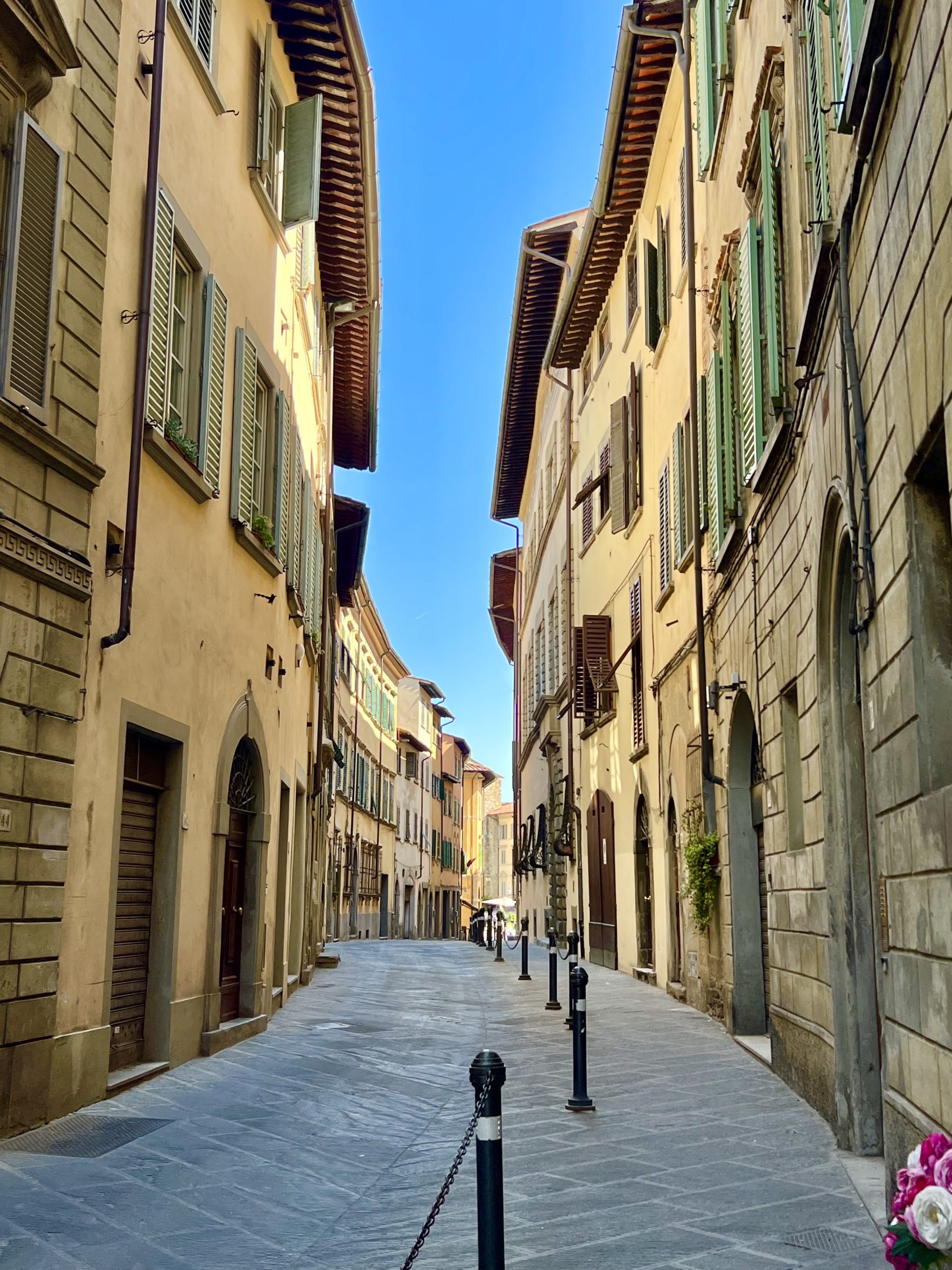
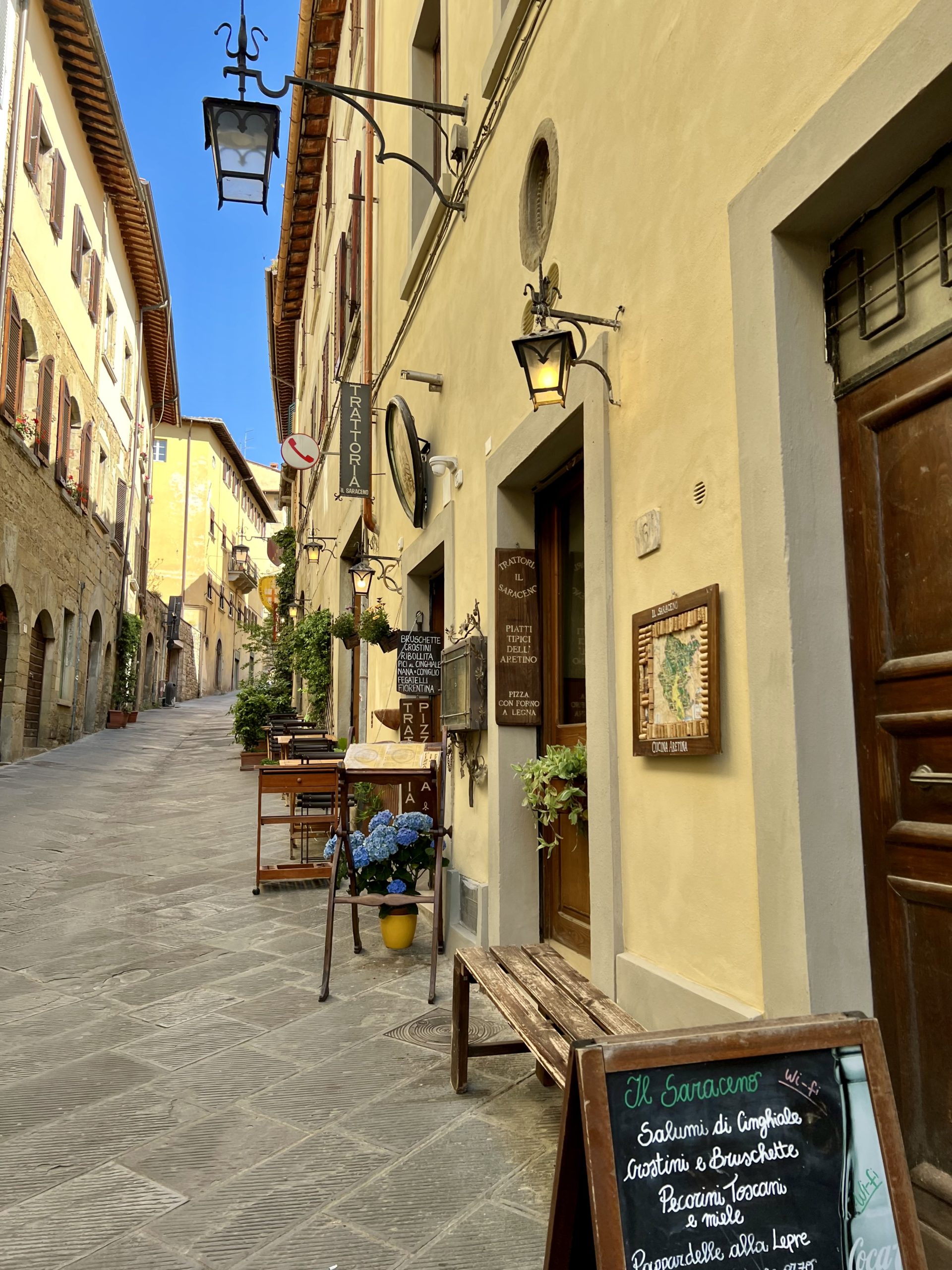
12. Stroll The Medieval Streets
The well-preserved old town of Arezzo is well worth serendipitous strolling. The street architecture is stunning. There’s almost no building more recent than the 16th century.
You can feast your eyes on ornamented doors, hand cut stone, and faded medieval walls.
The main drag of Arezzo is Via Cavour, which turns in Via Mazzini and Via Pesconi.
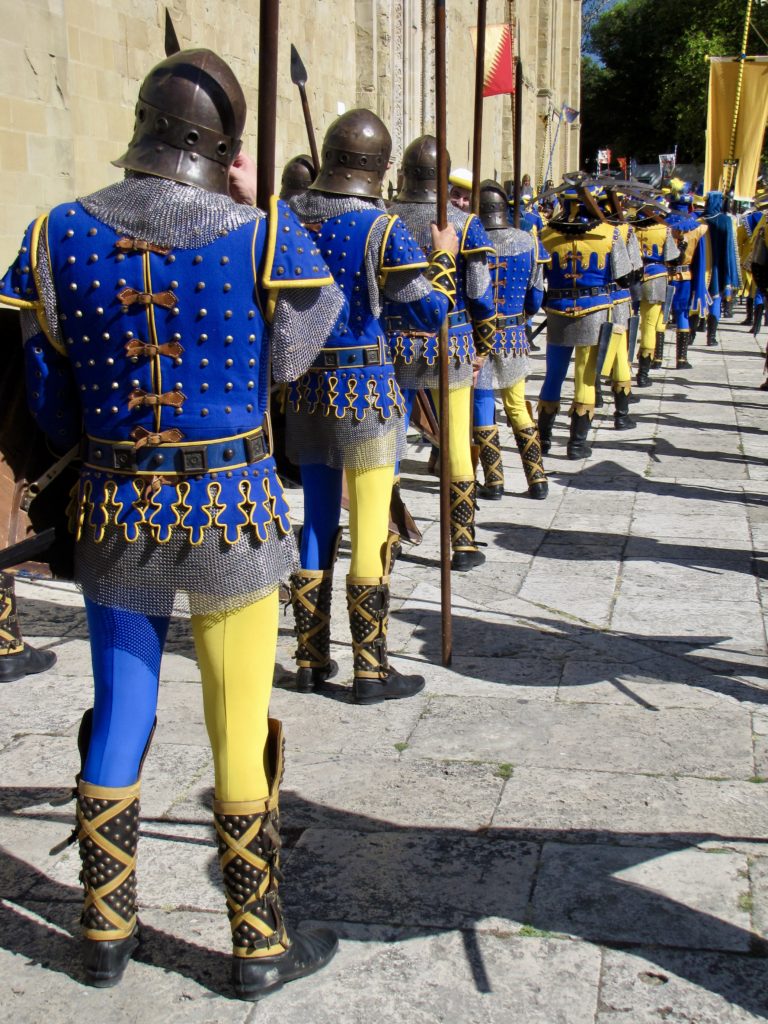
13. Joust of the Saracens
Arezzo has an annual medieval festival called the Joust of the Saracens. It takes place twice a year in June and September. “Saracen” is a term referring to the enemy of the Christian knights during the Crusades.
The Joust of the Saracens was a chivalrous tournament, somewhat akin to the Palio of Siena. The joust faded over time and was only revived in 1931.
In the modern day tournament, men dressed as medieval knights reenact the exercise in the Piazza Grande. The competitors ride as a group on eight horses. The four districts of Arezzo are each represented by two knights.
It’s a high speed horse race where riders plunge their spears into the shield of the dummy (the Saracen figure). The pair that strike the most blows win. The prize is a golden lance.
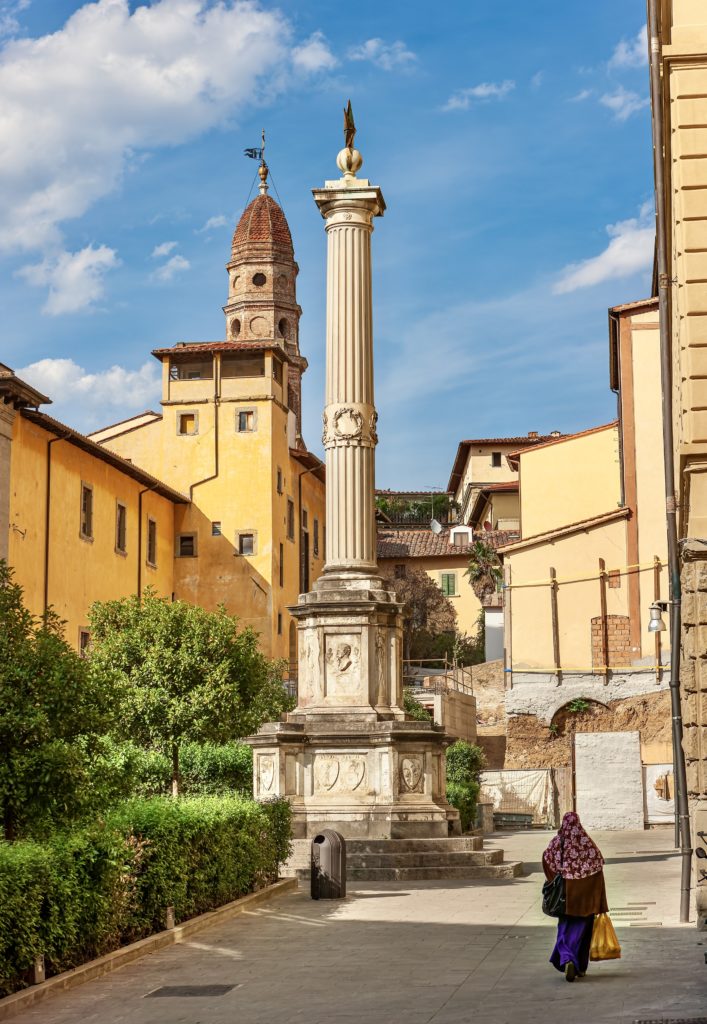
Tips For Visiting Arezzo
Here are some must know tips for visiting Arezzo.
1. Guided Tours Of Arezzo
With one day in Arezzo, you may want to book a guided walking tour to get the lay of the land and learn about the top attractions.
Arezzo is also a good place to take a food and market tour or pasta making class.
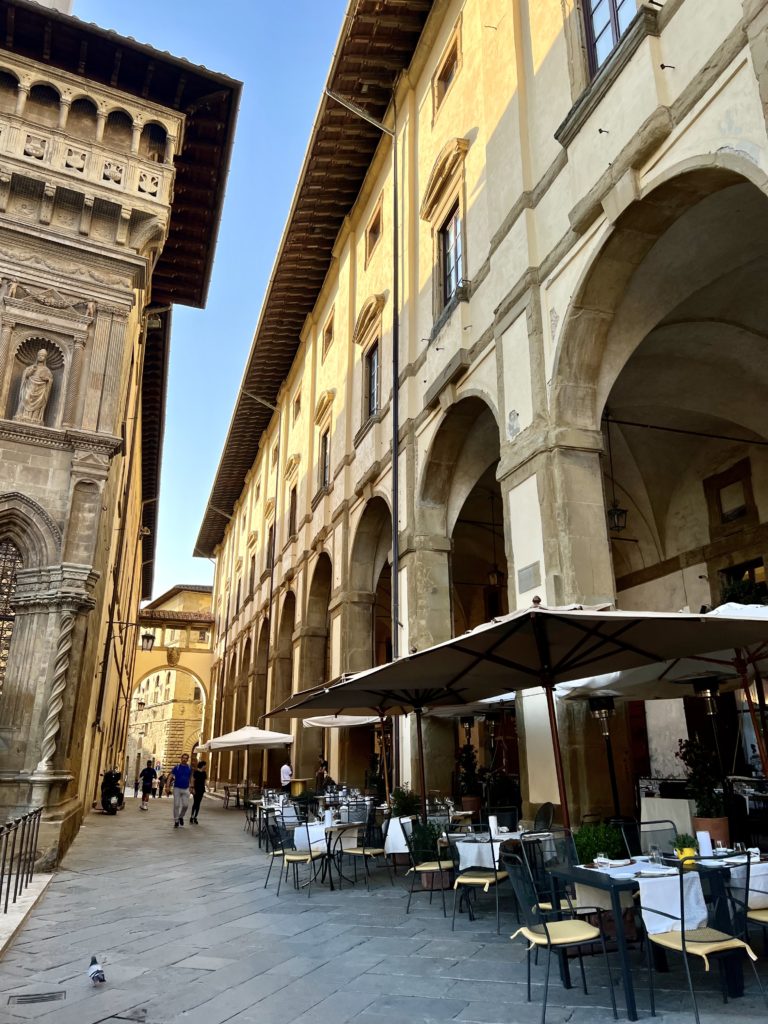
2. How To Get To Arezzo
Arezzo is an easy day trip from Rome, just an hour by high speed train from Rome’s Termini station. You can also visit Arezzo and Cortona on a full day guided tour from Rome.
Arezzo is also an easy day trip from Florence. You can drive or take the train.
Trains leave every half hour. You can also book a private transfer from Florence.
If you’re driving, park on the outskirts of town or at the Arezzo train station. You don’t want to drive into the chaotic historic center.
Arezzo’s train station is in the new part of town. But it’s only a 10 minute walk to the historic center.
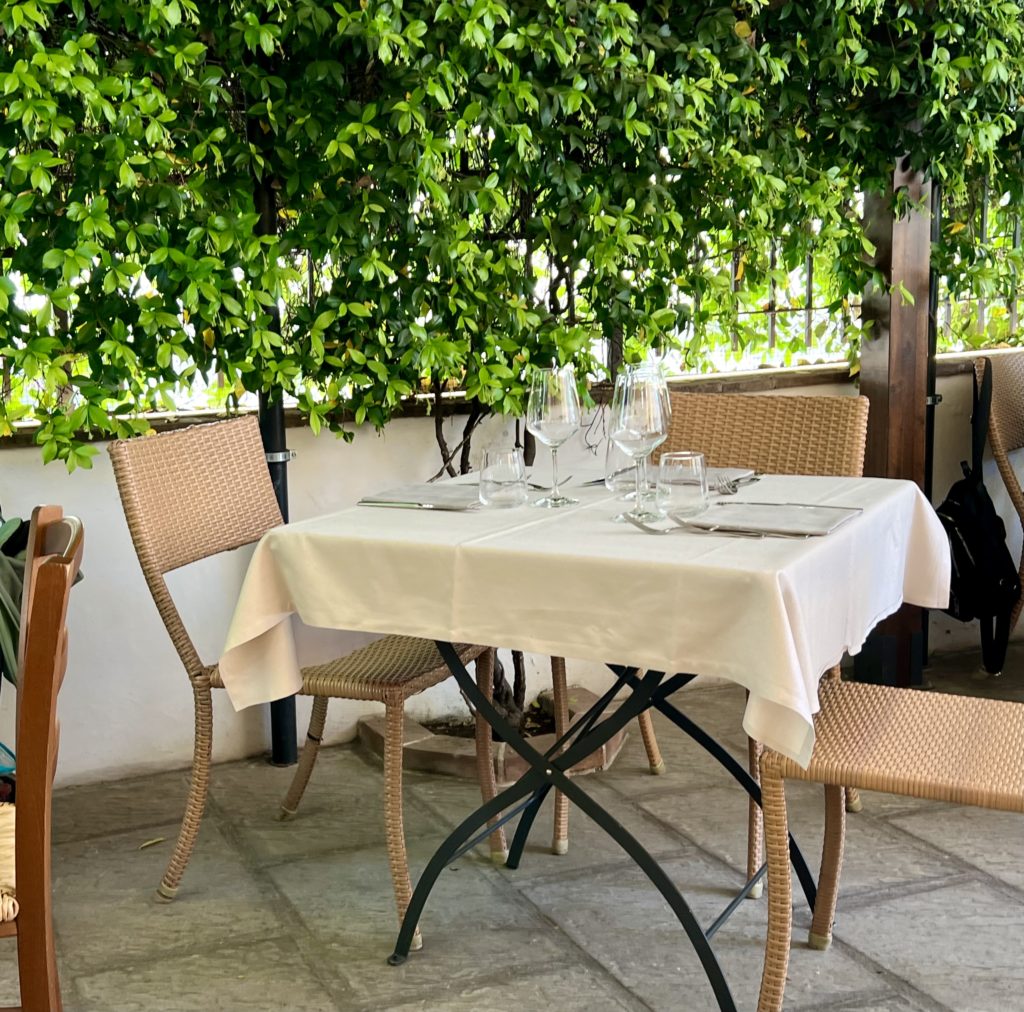
3. Where To Eat In Arezzo
Foodies will be happy in Arezzo. But I advise eating in a side street, not right on Piazza Grande. I had a completely mediocre meal at the highly touted Dario e Anna.
But I had two really excellent meals at Antica Fonte and La Pieve.
One of Arezzo’s most famous local dishes is the all’aretina pappardelle, which consists of pappardelle pasta with hare sauce.
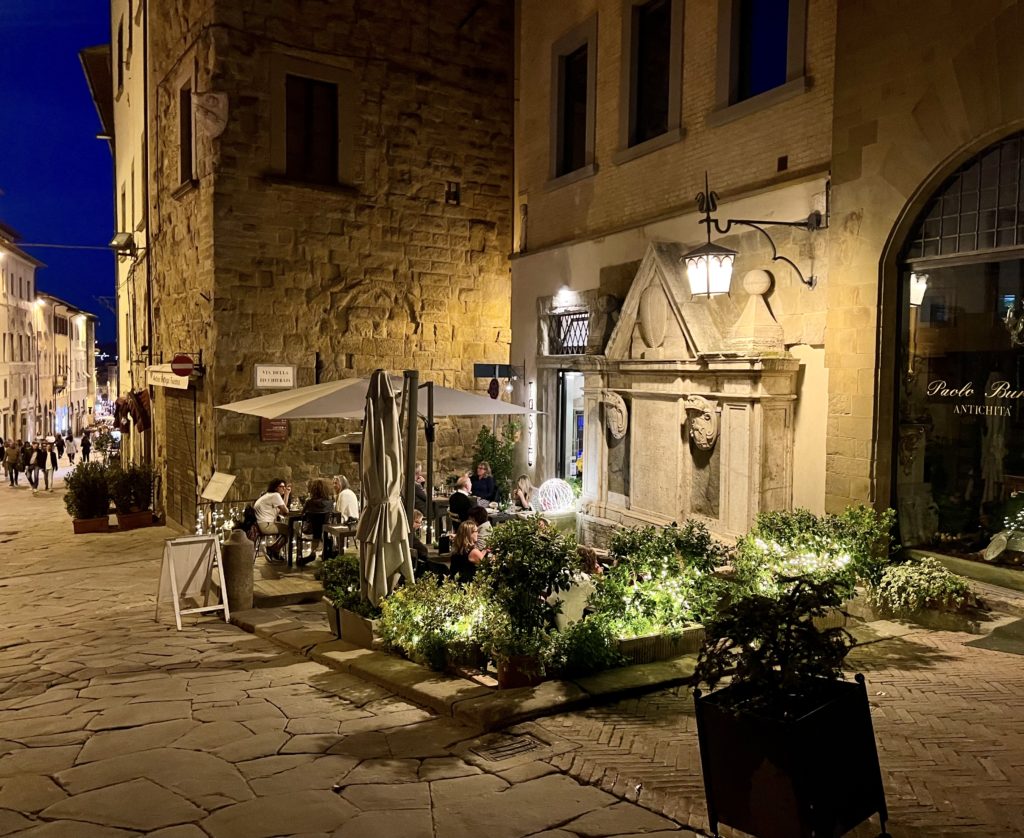
4. Where To Stay In Arezzo
I stayed at the Graziela Patio Hotel right in the historic center and it was quite lovely.
Another great place to stay just outside the city is Badia di Pomaio. It’s a luxury hotel housed in a restored 17th century abbey.
I hope you’ve enjoyed my guide to what to do in Arezzo. You may enjoy these other Tuscany travel guides:
- 10 Days in Tuscany itinerary
- 7 Days in Tuscany itinerary
- 1 Day In Florence Itinerary
- 2 Days in Florence itinerary
- 3 Days in Florence Itinerary
- Best museums in Florence
- Hidden gems in Florence
- 1 Day In Siena itinerary
- Best Things To Do in San Gimignano
- Best Things To Do In Montepulciano
- Best Things To Do In Pienza
If you’d like to spend one day in Arezzo, pin it for later.

